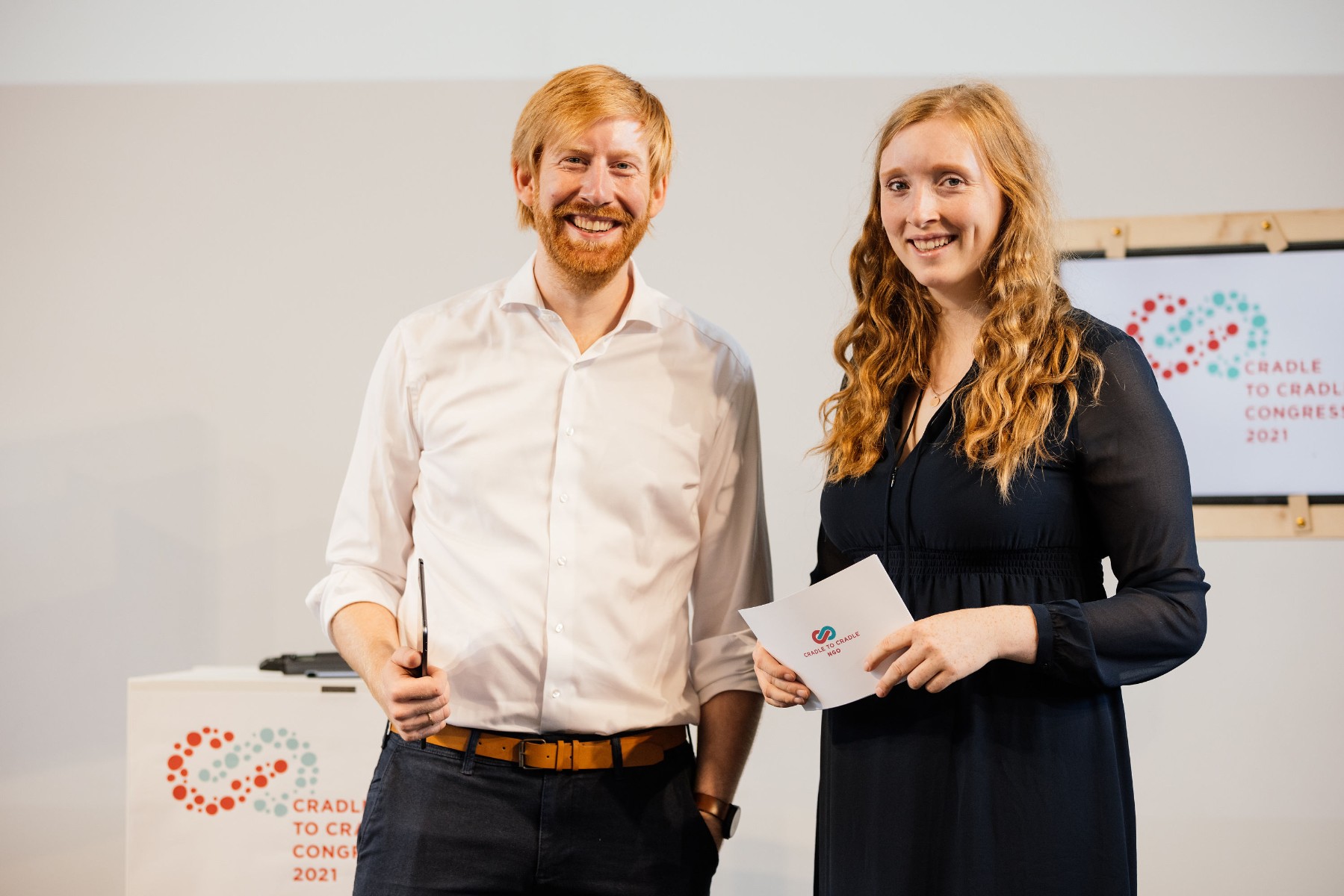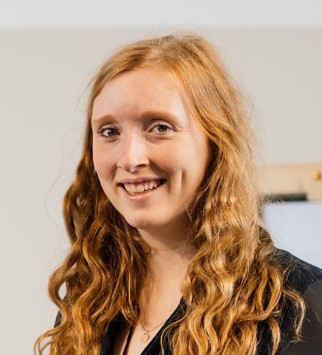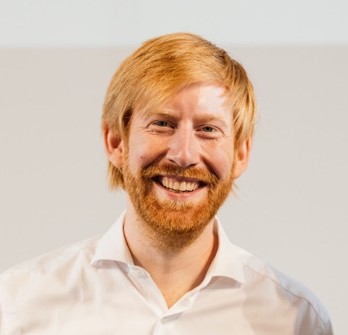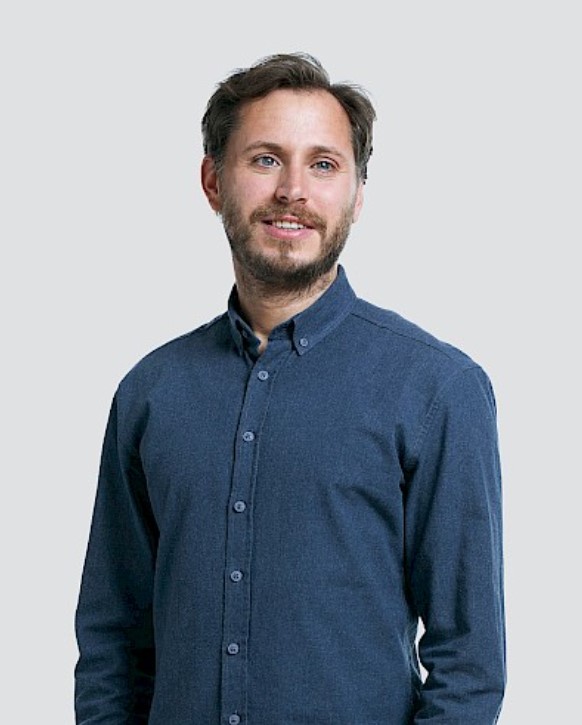In addition to the many things that people need to live, our economy produces one thing in particular: huge mountains of waste, contaminated water, polluted soil and a lot of thick air. The non-governmental organisation Cradle to Cradle NGO, or C2C NGO for short, says that this doesn't have to be the case. founded in Berlin in 2012 by environmental scientist Nora Sophie Griefahn, 31, and economist Tim Janßen, 36, the NGO has set itself the goal of establishing a new economic philosophy that is not based on linear value chains, but on closed systems in which resources are constantly renewed. A circular economy.
In German-speaking countries, the association has more than 800 active volunteers who are organised in dozens of initiatives. They provide information in schools and universities, speak in companies, organise conferences and congresses and inspire a world in which cars emit no emissions, buildings leave no hazardous waste and no one has to do without anything. Griefahn and Janßen explain their vision during a visit to the C2C Lab in Berlin, which is not only the NGO's office, but also functions as an education centre and showroom for many concepts from the cradle-to-cradle cosmos:
Ms Griefahn, Mr Janßen, what exactly is behind the idea of Cradle to Cradle and your organisation?
TIM JANßEN: Cradle to Cradle means "from the cradle to the cradle" or also: from the origin back to the origin. It is about a different way of living and doing business. Up to now, we have taken the earth's resources for granted, made things from them and then thrown them away or burnt them. And we have manufactured products that make us ill because they contain harmful substances. Our self-image is not just to make products less bad, but to produce good products of high quality that have a positive impact on people and the environment. We want people to no longer be pests, but beneficial organisms.
NORA SOPHIE GRIEFAHN: The fact that people are beneficial and can make a positive contribution is part of the C2C school of thought, or rather the first dimension of it. The second dimension is the design concept. This is about recognising the resources required as raw materials for a new product right from the start of production. The beauty of this principle is that products are worth just as much after use as they were before. They are raw materials for new products. This creates a cycle.
How can this work? We constantly use things that wear out.
NORA SOPHIE GRIEFAHN: We distinguish between two cycles. In the technological cycle, goods circulate that don't wear out, that can be used again and again. These office chairs here, for example, are built in such a way that all materials can be separated from each other by type so that they can then be reused. Consumables, on the other hand, circulate in the biological cycle and their abrasion or wear and tear inevitably ends up in the environment during use. They are allowed to do so as long as they are biodegradable. A bicycle or car tyre must therefore be produced in such a way that its abrasion can become a nutrient for something else. In other words, exactly what nature has been showing us for millions of years.
And such tyres exist?
NORA SOPHIE GRIEFAHN: Unfortunately, tyres that fully meet the C2C criteria do not yet exist. The abrasion of car tyres accounts for a third of all microplastic emissions in Germany. So if we say that cars are the mobility of the future, then we should design the entire car so that it works in both cycles. It would be a perfect raw material store for the technical cycle. However, the raw materials in a car also need to be recovered after use, instead of just compressing them and turning them into inferior construction steel.
Maybe we humans can't do any better.
NORA SOPHIE GRIEFAHN: Yes, we can. But we have to change the way we do business. Today, almost everything is focussed on the efficiency of using a product. Hardly anyone thinks about what happens to the product later on. This is the wrong approach because it falls far too short. If we were to reuse the material, the second utilisation phase would be much more efficient. But for this we need a new understanding that encompasses not only the economy, but society as a whole. We need a radical rethink in all areas.
Experience shows that the willingness for radical change is rather limited in the economy, isn't it?
TIM JANßEN: That was also my impression after six years of studying business administration, during which I dealt a lot with change and innovation management and entrepreneurship. At the time, I felt that economics lacked a holistic approach to solving the complex challenges of the climate and resource crisis. When I started to focus more intensively on C2C ten years ago, it wasn't an issue for the general public at all. But then I met Nora, who had been involved in the whole thing for some time. We both had the urge to make a difference. We then founded the NGO to network forward-thinking people in our field, do educational work and publicise the C2C concept. Today, we get a lot of enquiries, advise more and more people from business and politics and even get support from the EU Commission. So something is happening.
One of the pioneers in the field of the circular economy is the chemist Michael Braungart, who is also your father, Mrs Griefahn. Your mother was Environment Minister of Lower Saxony and one of the co-founders of Greenpeace Germany. Were you literally born with the cradle-to-cradle principle?
NORA SOPHIE GRIEFAHN: Not necessarily. My approach to the topic was more about questioning the world. I got offended by that early on. At school, I was never satisfied with simple answers, I always wanted to know more, to shape the future. And because school didn't teach me that, I studied environmental sciences. But my studies were almost exclusively about environmental protection, sustainability and the perspective of doing without: don't do this, don't consume that, then you'll be a better person. That was too passive for me. Being a little less of an idiot, making a little less rubbish, that's simply not enough. C2C was the logical next step for me.
Is striving for sustainability pointless?
TIM JANßEN: A more sustainable lifestyle is understandable and desirable for the vast majority of people. The problem, however, is that there is a lot of good will, but only a few good deeds. This is because sustainability is often only well thought of, but often not well done. Recycling and longevity do not help us enough. Not even by upcycling waste or making a shoe sole from an old car tyre.
Why is Cradle to Cradle the better approach?
TIM JANßEN: What characterises people is their will to create. People want to create something new, always bigger, better, more beautiful. If we want to change the world, we have to utilise the human will to create. We need to create new values instead of producing rubbish.
Why did we start creating these huge amounts of rubbish in the first place?
NORA SOPHIE GRIEFAHN: Nobody made a conscious decision to do so. But we humans are curious, research new technologies, like to try things out and discover new materials. PVC, for example, which is used as a floor covering, was only created because the industry had so much chlorine left over from its production. At the time, this was a great benefit because the remaining chlorine was not used as a weapon. Without packaging for food or medicines, we would look old - or rather, we wouldn't get that old. On the other hand, some plastics are the plague.
Is technical progress not well thought out?
TIM JANßEN: Yes. And above all, our form of economic activity is constantly creating an ecological imbalance, and in a very short space of time. Other creatures are in constant balance with the environment. The biomass of ants, for example, is four times greater than that of humans, but ants do not produce any waste. We need to be smarter and find an economic approach that not only conserves resources but also builds up new resources. Agriculture must enrich soils with nutrients, make them more fertile and not allow them to become desertified. Waters must become cleaner through our use of them, not dirtier.
Economise and grow without ruining the planet: How can we do that?
NORA SOPHIE GRIEFAHN: Of course we need raw materials. Using them is not fundamentally wrong. We are not necessarily harming the environment because we use raw materials. The problem is that we waste raw materials and lose them. Take carbon, for example: we can't simply take it out of the ground in the form of oil and burn it, especially not at this rate. Above all, carbon is currently accumulating in the wrong places. It should definitely be kept in the cycle as an organic resource, bound again, for example in the soil. The same applies to phosphorus, which we take from plants. We do not return it to the fields, but burn it in sewage sludge. Only to then take phosphorus from rock mines again and return it to the fields, but with cadmium and uranium, which contaminates our soils. We simply have to start thinking in terms of cycles rather than linear processes.
What does the industry think of your approach?
TIM JANßEN: The wider market is not yet ready for the C2C principle. Markets with global supply chains are often complex, with many dependencies and different interests. We don't just have to get the big companies interested in our idea, they also have to get all their partners and suppliers on board. A recyclable garment, for example, needs a fabric, a colour, a thread, a zip, a button - and for each individual part, you as a brand have your own manufacturer. Then you're on the production line, you've been using the same yarn for thirty years - and suddenly you say: I'd rather use cotton again instead of polyester. That's not possible, says the manufacturer, the thread will break. What's more, the machines would have to be set up differently, maybe even buy new ones, so that your product works on a large scale with a different yarn. And then you have to explain to the manufacturer that it's not the customer who wants this, but you, the brand, who suddenly wants to take responsibility. Of course you'll get a headwind. Many people simply don't want to change - especially not if it costs money. Unfortunately, that's quite human.
Can ecological responsibility be economically profitable at all?
NORA SOPHIE GRIEFAHN: C2C can be profitable because the materials used are returned to the cycle. It may be more expensive at first because you have to invest money in innovations. However, the company can decide for itself whether or not to pass on the costs to the product. What is different in the end is that instead of losing valuable resources, we retain the value of the materials and create further business cycles.
What about the small companies that don't have the money for such an economic model?
TIM JANßEN: Many small companies are actually hesitant. But once they have made it, the positive effect is also noticeable financially. After all, marketing and branding cost a lot of money. Paying workers fairly, not exploiting the planet: In some cases, this only adds up to a few cents in the supply chain. Companies just need to have the courage to develop and establish this new standard.
How can this courage be increased?
NORA SOPHIE GRIEFAHN: We need beacons that show people that this is possible and make producers realise that their raw materials are worth something. The producer of the flooring here in our office, for example, is already looking forward to it when we no longer want to use his carpet. Because he knows that the quality is great and that the material can be used again. It's the same with our dishwasher. We didn't buy it, we borrowed it and simply pay for each wash cycle. If we no longer want the machine, the manufacturer passes it on to someone else.
Are there any other specific examples?
TIM JANßEN: Of course. When we renovated the old prefabricated building here, we only used recyclable materials. The insulation is made from seaweed. The windows are replaceable because they are screwed instead of glued shut with construction foam. The partition walls that are installed here can be completely dismantled and reinstalled elsewhere. In Europe, more and more buildings are being constructed according to the C2C principle. In Hamburg, for example, the Moringa residential complex is currently under construction. This construction project proves that healthy and deconstructable residential buildings are possible that generate even more energy than they consume, that promote biodiversity and that also have a 30 per cent share of social housing.
And what about the other sectors?
TIM JANßEN: Many packaging manufacturers are already researching recyclable concepts. Some printing companies are now working with ecological inks. There are drinking bottles made from modified polyester, which is biodegradable. Then there are textile giants such as C&A and Lidl, which have the power to influence even the most complex value chain. So there are many areas for which there are already very concrete solutions.
Suppose you alone were allowed to decide which way things go. What would you change?
NORA SOPHIE GRIEFAHN: I think it's very important that you can no longer make a profit from linearly manufactured products that simply end up as waste. Otherwise, success and influence will continue to be linked to exploiting the planet. The market economy does not prevent us from protecting the environment at the same time. Fortunately, awareness of this is growing from generation to generation. Possessions and prestige are much less important today than they used to be. Those who have inherited wealth are now increasingly asking themselves: How should this continue? Where should it lead? Do we want to become even richer, at the expense of others, or fundamentally change something? We can see in many places that something is changing - be it through the Fridays for Future movement and the political debates on climate change, the media attention for the topic of C2C or simply the growth of our organisation. However, we need to think more holistically overall and not just consider climate change, but also the waste of resources, supply chains, working conditions and so much more. To do this, however, we urgently need a different political framework.
This interview previously appeared in the Germany edition of the sustainability magazine GREEN. Author: Laslo Leyda



